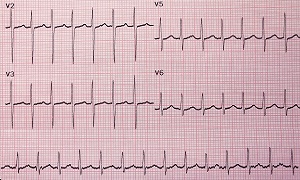Ross Procedure
The Ross procedure also known as the pulmonary autograft procedure, is a surgical technique meant to replace a diseased aortic valve. The procedure involves replacing the person’s aortic valve with a person’s own pulmonary valve. The pulmonary valve is next replaced with the person’s own pulmonary allograft.
The procedure is used more often in children, but its use in adults is controversial.
The procedure has been named after Dr. Donald Ross, a pioneer in cardiac surgery in the UK, who had performed it first in 1967.
Purpose
Over the past few years, the Ross procedure has gained significant popularity among people who need an aortic valve replacement. An operation is generally an excellent option for physically active young children, as well as young women who are of childbearing age.
The procedure is preferred as it has many as it has several advantages which include:
- No need for anticoagulation
- Growth potential in children
- Low incidence of thromboembolism
- Excellent Hemodynamics
- Low incidence of endocarditis
Preparation
It is likely that your doctor will recommend a few tests before the procedure, which includes:
- Chest X-ray
- Blood tests, in order to check the general health
- Electrocardiogram, to check the heart rhythm
- Echocardiogram, in order to look at the heart and the blood flow through the heart
- Heart catheterization, to better look at the coronary blood vessels or to measure the pressure in the heart and lungs
The hair around the area of operation might be removed prior to the surgery.
Procedure
Next, your surgeon will make an incision in the middle of the chest. In order to reach the heart, the surgeon will be separating the breastbone. Next, he/she will remove your diseased aortic valve and replace it with your own pulmonary valve, which is similar in anatomy.
Next, the breastbone is put together with wires, and the surgeon closes the muscle and the skin. A dressing will be applied as well.
Within a few months, the pulmonary valve becomes thicker and stronger and begins to behave like an aortic valve.
After the procedure
Risks
In most cases, the surgery is a success. But sometimes there might be a few complications. Risk factors might vary based on your age as well as other health problems. Some of the risks associated with this procedure include:
- Infection
- Excess bleeding
- Heart block
- Irregular heart rhythms
- Complications from anesthesia
- Blood clots leading to stroke or heart attack
Sometimes, the surgery might fail to work. This might make another surgery necessary.




